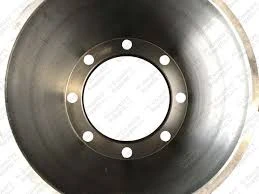
-
 Afrikaans
Afrikaans -
 Albanian
Albanian -
 Amharic
Amharic -
 Arabic
Arabic -
 Armenian
Armenian -
 Azerbaijani
Azerbaijani -
 Basque
Basque -
 Belarusian
Belarusian -
 Bengali
Bengali -
 Bosnian
Bosnian -
 Bulgarian
Bulgarian -
 Catalan
Catalan -
 Cebuano
Cebuano -
 Corsican
Corsican -
 Croatian
Croatian -
 Czech
Czech -
 Danish
Danish -
 Dutch
Dutch -
 English
English -
 Esperanto
Esperanto -
 Estonian
Estonian -
 Finnish
Finnish -
 French
French -
 Frisian
Frisian -
 Galician
Galician -
 Georgian
Georgian -
 German
German -
 Greek
Greek -
 Gujarati
Gujarati -
 Haitian Creole
Haitian Creole -
 hausa
hausa -
 hawaiian
hawaiian -
 Hebrew
Hebrew -
 Hindi
Hindi -
 Miao
Miao -
 Hungarian
Hungarian -
 Icelandic
Icelandic -
 igbo
igbo -
 Indonesian
Indonesian -
 irish
irish -
 Italian
Italian -
 Japanese
Japanese -
 Javanese
Javanese -
 Kannada
Kannada -
 kazakh
kazakh -
 Khmer
Khmer -
 Rwandese
Rwandese -
 Korean
Korean -
 Kurdish
Kurdish -
 Kyrgyz
Kyrgyz -
 Lao
Lao -
 Latin
Latin -
 Latvian
Latvian -
 Lithuanian
Lithuanian -
 Luxembourgish
Luxembourgish -
 Macedonian
Macedonian -
 Malgashi
Malgashi -
 Malay
Malay -
 Malayalam
Malayalam -
 Maltese
Maltese -
 Maori
Maori -
 Marathi
Marathi -
 Mongolian
Mongolian -
 Myanmar
Myanmar -
 Nepali
Nepali -
 Norwegian
Norwegian -
 Norwegian
Norwegian -
 Occitan
Occitan -
 Pashto
Pashto -
 Persian
Persian -
 Polish
Polish -
 Portuguese
Portuguese -
 Punjabi
Punjabi -
 Romanian
Romanian -
 Russian
Russian -
 Samoan
Samoan -
 Scottish Gaelic
Scottish Gaelic -
 Serbian
Serbian -
 Sesotho
Sesotho -
 Shona
Shona -
 Sindhi
Sindhi -
 Sinhala
Sinhala -
 Slovak
Slovak -
 Slovenian
Slovenian -
 Somali
Somali -
 Spanish
Spanish -
 Sundanese
Sundanese -
 Swahili
Swahili -
 Swedish
Swedish -
 Tagalog
Tagalog -
 Tajik
Tajik -
 Tamil
Tamil -
 Tatar
Tatar -
 Telugu
Telugu -
 Thai
Thai -
 Turkish
Turkish -
 Turkmen
Turkmen -
 Ukrainian
Ukrainian -
 Urdu
Urdu -
 Uighur
Uighur -
 Uzbek
Uzbek -
 Vietnamese
Vietnamese -
 Welsh
Welsh -
 Bantu
Bantu -
 Yiddish
Yiddish -
 Yoruba
Yoruba -
 Zulu
Zulu
drum vs disk brakes
Drum vs. Disk Brakes A Comparative Analysis
When it comes to automotive braking systems, two primary types exist drum brakes and disk brakes. Understanding the differences between these systems is crucial for vehicle owners, mechanics, and automotive enthusiasts alike, as each type has its unique advantages and drawbacks.
Construction and Mechanism
Drum brakes consist of a cylindrical drum that rotates with the wheel. Inside this drum are brake shoes, which are lined with friction material. When the brake pedal is pressed, hydraulic pressure pushes the shoes outward against the drum's inner surface, creating friction that slows the vehicle. On the other hand, disk brakes utilize a flat, disc-shaped rotor that spins with the wheel. Brake calipers, fitted with brake pads, clamp down on the rotor when the brakes are engaged, producing the necessary friction to decelerate the vehicle.
Performance and Efficiency
One of the most significant differences between drum and disk brakes is their performance. Disk brakes generally offer superior stopping power and are better at dissipating heat. This enhanced heat management can prevent brake fade—a condition where the brakes lose effectiveness due to overheating—making disk brakes more reliable in high-performance or heavy-load applications.
Drum brakes, while adequate for most standard vehicles, can struggle under demanding conditions. They are slower to cool down, which can lead to decreased performance over time. However, they excel in specific applications, especially in light-duty vehicles and older models, due to their simplicity and lower manufacturing costs.
drum vs disk brakes

Maintenance
In terms of maintenance, drum brakes can be more cumbersome. The enclosed design makes it harder to inspect and service. On the other hand, disk brakes are generally easier to maintain, as the pads and rotors are more accessible. This ease of access can lower labor costs associated with brake jobs and encourage owners to perform regular check-ups.
Cost Considerations
Cost is another factor to consider. Drum brakes are typically less expensive to produce and install than disk brakes, making them a cost-effective choice for manufacturers of budget-conscious vehicles. However, the long-term benefits of disk brakes, such as better performance and easier maintenance, can outweigh the initial cost over the lifespan of the vehicle.
Conclusion
In conclusion, both drum and disk brakes have their place in the automotive world. Disk brakes offer enhanced performance, heat dissipation, and maintenance ease, making them the preferred choice for many modern vehicles. Conversely, drum brakes continue to provide a reliable, cost-effective solution for basic needs, particularly in less demanding applications. Ultimately, the choice between drum and disk brakes will depend on the specific needs of the vehicle and the driving conditions.
-
What Are Drum BrakesNewsJul.07,2025
-
Understanding Brake Drum MaterialNewsJul.07,2025
-
Semi-Trailer Brake Drum: A Key Component for Extreme Loads and Long-Distance TransportNewsJul.07,2025
-
Drum Brake Pads for SaleNewsJul.07,2025
-
Brake Drums for SaleNewsJul.07,2025
-
Brake Drum ManufacturerNewsJul.07,2025
-
Aluminum Brake Drums: The Future of High-Performance CarsNewsJul.07,2025
